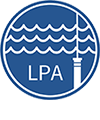While the planet as a whole is currently undergoing rapid warming, Quebec’s far north is one of the fastest-warming regions in the world. This warming affects the different components of landscapes and ecosystems. It is uncertain how northern lakes will be influenced by these changes, and to what extent they have already undergone changes since the acceleration of warming documented since the mid-1990s in Nunavik. Anthropogenic activities are a second source of changes in lake conditions, the most common of which are acidification, pollution, and eutrophication. How have lakes in northern Quebec responded to these anthropogenic changes and how can these changes be temporally constrained?
The main objective is to obtain new information on the effects of global warming on lake ecosystems. Combining data from prior to the onset of warming (Fallu and Pienitz 1999, Larocque et al. 2006) with new data will help to understand how lakes have responded to warming over the past 25 years.
The second objective of the research is to conduct paleolimnological studies on sedimentary sequences of selected/strategic lakes to study the evolution of biomes (changes in density and composition of catchment vegetation) and the impact on lakes, which reflect the vegetation of their watershed, of such warming.
A second research component is the third objective, which is to conduct an integrated assessment of the impacts of current and past anthropogenic activities on aquatic ecosystems in Tursujuq National Park, from an analysis of biological and geochemical indicators contained in lake sediment cores.
The study area covers a distance of approximately 1100 km between 49°48’ and 59°32’ north latitude and 75°43’ and 78°78’ west longitude, thus covering the three major ecoclimatic zones of the upper boreal, subarctic and lower Arctic in northern Quebec. This study will benefit from a transect of lakes sampled at the end of the 20th century (Fallu and Pienitz, 1999). These are 59 headwater lakes, i.e., systems without tributaries, that record local environmental conditions in their water and sediment. I propose to re-sample these 59 lakes after a 25-year period to test how recent warming has affected the ecology of bio-indicators. The study area is divided into two large sampling areas. The first consists of 27 lakes located in the southern part of the study area. These lakes are easily accessible by the route du Nord where sampling will be done by inflatable boat. The remaining 32 lakes in the northern portion will be sampled from a float-equipped helicopter.
Sediment sampling will be conducted using two techniques: gravity corers for short cores, and percussion corers for longer cores (> 40 cm). Long cores will be collected from selected strategic lakes, i.e., those on the border between two biomes (e.g., transition from forest tundra to tundra). In addition, several limnological parameters will be analysed, including salinity, electrical conductivity, pH, temperature, and water transparency. Laboratory analyses are divided into two parts. First, water samples will be used to determine chemical properties (e.g., nutrients, major ions, and metals). Second, bioindicators, including diatoms and chironomids, will be studied according to standard methods. The identification of diatom and chironomid species will be based on the reference flora and fauna of this geographical area. Multivariate statistical analyses based on relative species abundances and environmental data will be performed for each bioindicator.



